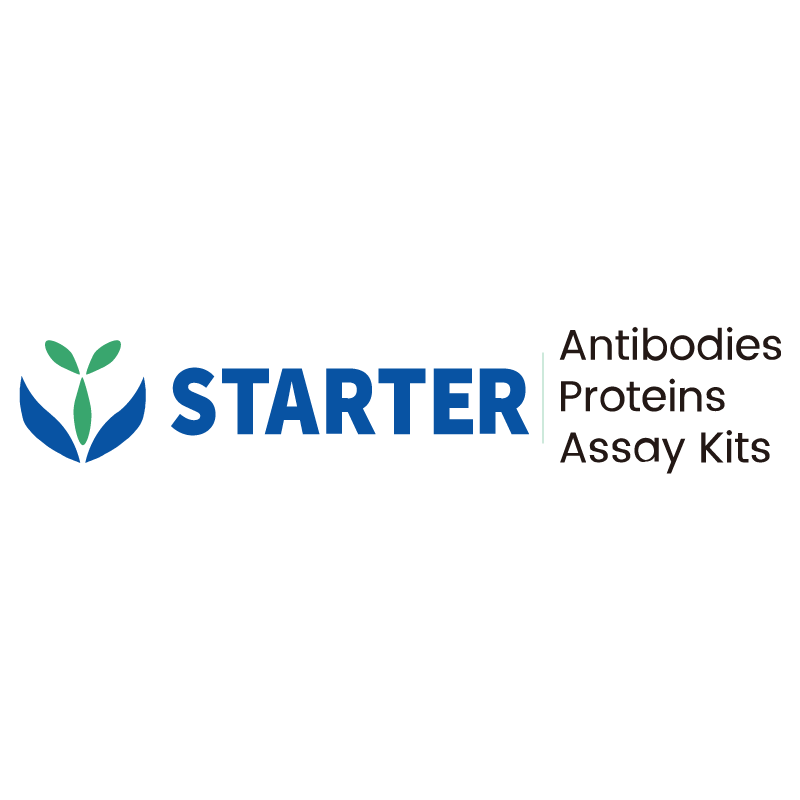WB result of LOX Recombinant Rabbit mAb
Primary antibody: LOX Recombinant Rabbit mAb at 1/1000 dilution
Lane 1: HeLa whole cell lysate 20 µg
Lane 2: Jurkat whole cell lysate 20 µg
Secondary antibody: Goat Anti-Rabbit IgG, (H+L), HRP conjugated at 1/10000 dilution
Predicted MW: 47 kDa
Observed MW: 60 kDa
This blot was developed with high sensitivity substrate
Product Details
Product Details
Product Specification
| Host | Rabbit |
| Antigen | LOX |
| Synonyms | Protein-lysine 6-oxidase; Lysyl oxidase |
| Immunogen | Synthetic Peptide |
| Location | Secreted |
| Accession | P28300 |
| Clone Number | S-1647-49 |
| Antibody Type | Recombinant mAb |
| Isotype | IgG |
| Application | WB, IHC-P |
| Reactivity | Hu, Ms, Rt |
| Positive Sample | HeLa, Jurkat, C2C12, NIH/3T3 |
| Purification | Protein A |
| Concentration | 0.5 mg/ml |
| Conjugation | Unconjugated |
| Physical Appearance | Liquid |
| Storage Buffer | PBS, 40% Glycerol, 0.05% BSA, 0.03% Proclin 300 |
| Stability & Storage | 12 months from date of receipt / reconstitution, -20 °C as supplied |
Dilution
| application | dilution | species |
| WB | 1:1000 | Hu, Ms |
| IHC-P | 1:200 | Hu, Ms, Rt |
Background
Lysyl oxidase (LOX) is a copper-dependent amine oxidase that plays a pivotal role in the assembly of the extracellular matrix (ECM) by catalyzing the oxidative deamination of lysine residues in collagen and elastin, leading to the formation of aldehydes that participate in the cross-linking of these structural proteins. This process is essential for tissue integrity and repair. Beyond its enzymatic function, LOX also engages in a variety of signaling pathways, contributing to cell fate, differentiation, and communication during development, tissue maintenance, and repair. LOX activities have been implicated in a range of disorders, including those affecting the vasculature, heart, lungs, skin, placenta, diaphragm, kidneys, and pelvic floor, as well as in conditions like glioblastoma, diabetic neovascularization, osteogenic differentiation, and tumor progression and metastasis. In the context of inflammation, LOX is involved in reducing pluripotent mesenchymal cell pools, which are relevant to the pathology of diseases such as diabetes, osteoporosis, and rheumatoid arthritis. LOX also interacts with signaling mediators like EGFR, PDGF, VEGF, and TGF-β, influencing processes such as angiogenesis, macrophage infiltration, and glioma cell survival. Its multifaceted functions make LOX a significant player in both normal physiological processes and the pathogenesis of various diseases.
Picture
Picture
Western Blot
WB result of LOX Recombinant Rabbit mAb
Primary antibody: LOX Recombinant Rabbit mAb at 1/1000 dilution
Lane 1: C2C12 whole cell lysate 20 µg
Lane 2: NIH/3T3 whole cell lysate 20 µg
Secondary antibody: Goat Anti-Rabbit IgG, (H+L), HRP conjugated at 1/10000 dilution
Predicted MW: 47 kDa
Observed MW: 60 kDa
This blot was developed with high sensitivity substrate
Immunohistochemistry
IHC shows positive staining in paraffin-embedded human cerebral cortex. Anti-LOX antibody was used at 1/200 dilution, followed by a HRP Polymer for Mouse & Rabbit IgG (ready to use). Counterstained with hematoxylin. Heat mediated antigen retrieval with Tris/EDTA buffer pH9.0 was performed before commencing with IHC staining protocol.
IHC shows positive staining in paraffin-embedded human kidney. Anti-LOX antibody was used at 1/200 dilution, followed by a HRP Polymer for Mouse & Rabbit IgG (ready to use). Counterstained with hematoxylin. Heat mediated antigen retrieval with Tris/EDTA buffer pH9.0 was performed before commencing with IHC staining protocol.
IHC shows positive staining in paraffin-embedded mouse cerebral cortex. Anti-LOX antibody was used at 1/200 dilution, followed by a HRP Polymer for Mouse & Rabbit IgG (ready to use). Counterstained with hematoxylin. Heat mediated antigen retrieval with Tris/EDTA buffer pH9.0 was performed before commencing with IHC staining protocol.
IHC shows positive staining in paraffin-embedded rat cerebral cortex. Anti-LOX antibody was used at 1/200 dilution, followed by a HRP Polymer for Mouse & Rabbit IgG (ready to use). Counterstained with hematoxylin. Heat mediated antigen retrieval with Tris/EDTA buffer pH9.0 was performed before commencing with IHC staining protocol.


